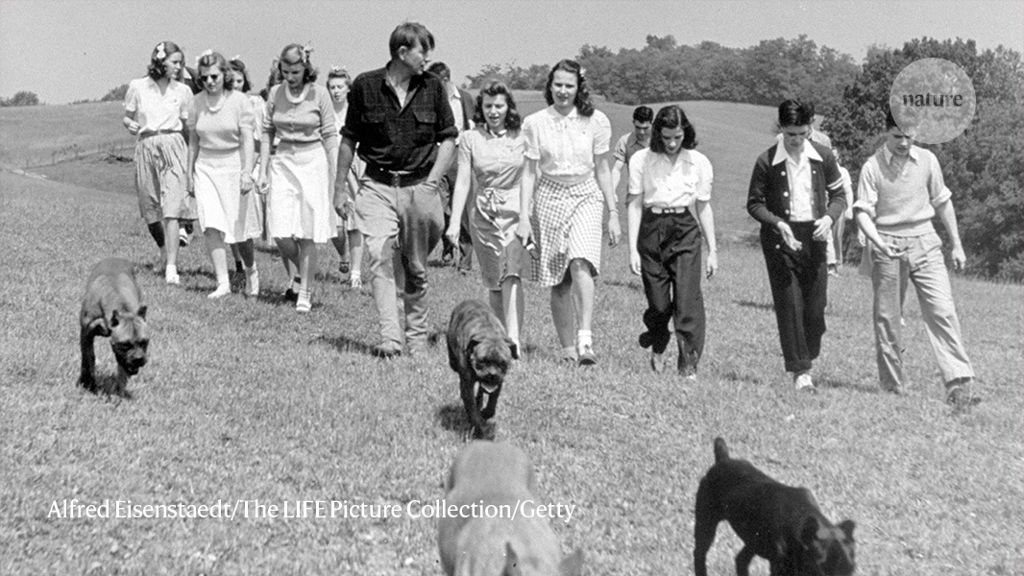The Planter of Modern Life: Louis Bromfield and the Seeds of a Food Revolution Stephen Heyman W. W. Norton (2020)
Saving the world’s agricultural soils is perhaps the most overlooked environmental challenge of this century. Driving through freshly tilled fields in rural Indiana a few years back, I was struck by how low points retained rich, black earth, yet on the hilltops, the khaki subsoil was completely exposed. I could see the land being shorn of fertility. We urgently need to pay attention to practices that can help to regenerate it.
To that end, former columnist for The New York Times Stephen Heyman resurrects an obscure figure from US agricultural history in this engaging biography, The Planter of Modern Life. Heyman’s subject, Louis Bromfield, was a Pulitzer-prizewinning novelist before he became a prominent critic of industrialized farming. Today, Bromfield’s journey of discovery reinforces growing calls to rebuild healthy, fertile soil around the world.
Little about Bromfield’s life was conventional. Skipping over his childhood in rural Ohio, Heyman follows him through a series of colourful roles, including ambulance driver during the First World War; literary darling of post-war Paris; gardener in southern France; and eventually Hollywood screenwriter. In 1930s France, Bromfield copied his peasant neighbour’s compost-making and mulching process to convert a bare, rubble-filled patch into a fertile vegetable plot. Noting how French gardens had been farmed for centuries, whereas the United States’ soil was blowing away in the Dust Bowl, he realized something was amiss with the modern approach to managing land.
Bromfield then visited the English botanist Albert Howard in India. Howard had travelled there to teach Western agricultural techniques, but ended up documenting traditional Indian methods and adapting them to colonial agriculture — which helped to found the organic movement. On Howard’s farm in Indore, India, Bromfield saw large-scale compost building in action, and absorbed advice to emulate nature to maintain fertile soils.
After moving back to Ohio to avoid the Second World War, Bromfield bought a farm with his book royalties. He put Howard’s ideas to work when spring snowmelt revealed that half his topsoil had been washed off into gullies that could swallow a cow. Bromfield composted and mulched, planted cover crops and practised rotation, and left steep slopes unploughed. He even grew several crops together in the same field.
His neighbours thought his methods crazy. But his soil quickly improved, and he became convinced that what we now call conventional farming was heading for disaster. Bromfield used his literary prominence to spread Howard’s ideas. He wrote popular memoirs (Pleasant Valley in 1945 and Malabar Farm in 1948) about his experiences, and opened his farm up to tens of thousands of visitors so that they could see a model for an alternative approach to cultivating crops.
Better biography than agricultural history, The Planter of Modern Life is packed with spats from Bromfield’s life as a writer, but thin on farming and the actual origins of the modern organic movement. Heyman pays more attention to how Bromfield hosted Humphrey Bogart and Lauren Bacall’s wedding in 1945 than to soil-building practices. In its descriptions of history, the book verges on simplistic. It presents Bromfield as a leader, when he added little new thinking about restoration of degraded land. Heyman divides farming into industrial and organic camps and casts Bromfield as a champion of the latter — a guru who romanticized a disappearing era and saw solutions to modern problems in the past. Yet techniques used in organic farming created serious problems long before the rise of modern agrochemicals. From classical Greece to colonial America, tillage eroded topsoil out from under civilization after civilization.
As Heyman notes, Bromfield was not an organic purist. He realized that mineral and chemical fertilizers could be needed to kickstart the growth of enough biomass to sustain soil fertility with green manures. Such pragmatic thinking hasn’t endeared him to proponents of either organic or conventional techniques. But many of the practices Bromfield embraced are now central to the burgeoning global movements of regenerative and conservation agriculture, which aim to maintain crop yields and farm profits while enhancing soil fertility and cutting environmental impacts. As I discussed in my 2017 book Growing a Revolution, these innovative farmers combine traditional practices, such as planting cover crops and rotation, with more modern developments, such as no-till farming, to build fertile soil and reduce reliance on diesel, fertilizers and pesticides (while saving money). Bromfield’s story is an inspirational glimpse into the roots of these growing movements.
Bromfield’s original insight, then, was seeing the crucial importance of soil health before science really understood why this matters, or how to build it. Today we know that the future of farming lies not in replicating a mythical golden age, but in merging ancient wisdom with the technology of today.



